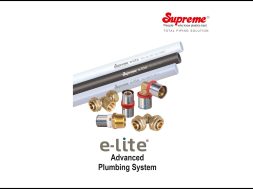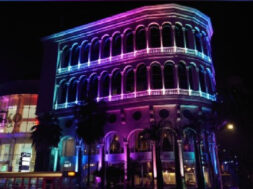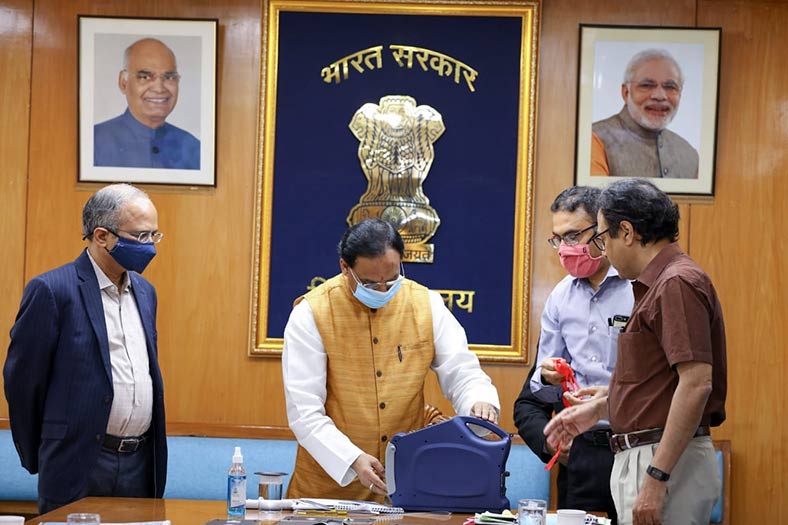No Seepage in Underground Construction Joints! [May 2012]
This article examines various types of waterstops, and recommends high performance hydrophilic water swelling waterstops for long term prevention of seepage in underground construction joints
Concrete foundations and structures which are exposed mainly to ground water are vulnerable to seepages and leakages due to cracks in concrete. Most places where a cold joint or construction joint is formed, generally makes an entry point for the water at later stages. Here, after shrinkage there is a significant possibility of seepage. Due to this there is a need to take care of this critical area by providing a seal which will take effect once the water pressure tries to push the water through. The deeper the construction the more is the chance of seepage because the pressure of water in soil can be quite high. Roughly speaking at a depth of 20 metre the water pressure can be 2 bar, and 80 metre depth it will be about 8 bar. The need for good quality water stops is thus self evident. This article is an effort to examines various types of waterstops, and highlight the advantages of using High Performance Hydrophilic Water Waterstops for long term prevention of seepage in Underground Construction Joints.
There are various types of water stops which are commonly available in the market. They can be broadly classified as inert plastic or rubber based and water swealable.
PVC Waterstops Waterstops are made from extruded PVC polymer. These are the most common in industry. They are put vertically in a horizontal construction joint. Thus when water seeps in, it will have to travel a longer distance (up and down along with surface of PVC waterbar to be able to seep inside). Water will tend to lose energy and thus seepage will be stopped. However, PVC water bars have many weaknesses such as:• They are difficult to install due to their large size and weight• They often fall when the second concrete is poured. This creates air pockets and defeats the purpose of using water-stop• Moreover they need to be welded at joints and often have problem of seepage at welding points, because of improper welding • Another problem is that PVC is not compatible with concrete. Concrete does not stick easily to PVC and a small gap remains.
Rubber Waterstop StripsTo solve the problem of PVC waterbars, rubber strips are often used. They are of two types: Plain Rubber Strips, and Expanding types rubber strips. Plain Rubber Strips: Plain rubber strips are installed on first concrete usually between rebars, and then second concrete is poured. The strip gets pressed with weight of concrete and thus blocks the gap. The main advantage of this type of waterstop is that it is easy to install. The strip is narrow and long, and light weight, and does not have to be held in place like PVC. Thus such strips are easy to install and they don’t require welding to join and don’t have mishaps like falling or creating airpockets. They can also be used on vertical construction joints with ease.Working Principle: Stops water by compression pressure developed by rubber strip compressed between two concrete surfaces.Hydrophilic Rubber Strip Waterstops: However, more effective rubber strips are those which have swelling type chemical inside them. When the strip comes in contact with water, the chemical inside the rubber strip absorbs water and swells. Thus the rubber strip also swells filling any small gaps. This is called Double Locking mechanism – rubber is pressed by weight of concrete and also puts expansion pressure on concreteWorking Principle: Stops water by double locking principle i.e., compression initially and expansion pressure after swelling. Types of waterswelling rubber strip waterstops These are of 4 types, viz. Bentonite based, Acrylic Based, Urethane Based and those with Urethane plus added wire mesh inside. In each of these, a chemical which swells in contact with water is embedded inside the rubber strip. When rubber strip comes in contact with water, the chemical inside the strip expands. Thus swelling the rubber strip and working to stop the seepage of water.
One needs to understand the chemistry, mechanism and features of each of these hydrophilic types to find one that is most suitable for one’s requirements of cost and performance. Points that need to be considered are presence or absence of water after installation, expansion speed, expansion ratio, water pressure/depth to which the waterstop will be subjected, precautions to be taken before, during and after installation. This is one of those cases where faster and more (expansion) is generally un-desirable. For example, faster expansion indicates that they may expand by moisture of second concrete and later have gap. Much expansion may cause stress to concrete resulting in cracks later on. This may require more coverage and bigger concrete.Bentonite Based Rubber strips: These were perhaps the first hydrophilic waterstops to be developed. Sodium bentonite is mixed in butyl rubber and extruded into strip forms. They expand in contact with water. The main weak point of these is that they expand quickly in contact with water and don’t shrink when water is removed. They cannot go through wet dry cycles. They become useless if there is water spillage before the second concrete is poured because they are fragile when expanded and easily damaged.Acrylic Based Rubber Strips: These are fast swelling types and can go through many wet dry cycles. Their weak point is that the hydrophilic chemical is usually very fast swelling and also usually has a tendency to elute out over a period of time. These seem to be much better than bentonite types.Modified Urethane Polymer based rubber strips: Modified Urethane Polymer is embedded inside the rubber strip. This hydrophilic agent does not elute out from rubber. This increases its efficiency over long term. Because of use of special urethane chemical these strips have comparatively slow and less expansion. Slow expansion ensures no cavity formation and less expansion ensures development of required (and not excessive) pressure. High expansion type rubber strips based on other chemicals may cause excessive pressure on concrete resulting in cracks. This may be an advantage in many situations of construction joints. Urethane based strips also have uniform stable expansion in salt water and also cement water. These strips are usually high performance type and depending on the grade can be used at big depths like 80 or 100 metres.
Steel Mesh Inside the Rubber strip: ADEKA Corporation, Japan had developed concept of using steel mesh inside the rubber strip. This was done to prevent a phenomenon called snaking and to give extra strength to the Rubber strip. This product called ADEKA ULTRASEAL is being sold in Japan since 1977. Snaking: Hydrophilic rubber strips are usually attached to concrete by 3 methods. One is by adhesive, second is by paste (especially in case of rough surface). Third method is by nails. Nails are recommended to ensure that strip does not move even if someone steps on it or if something falls on it. Nails are also recommended if surface is wet. Sometimes, there is rain or water splash or accumulation on the concrete after the hydrophilic rubber strip is attached. Then the strip may expand. Strips without steel mesh inside expand in all directions including longitudinal direction. If they are nailed then they will lift from concrete surface and look like snake. This is called snaking. But strips with steel mesh inside don’t expand in longitudinal direction – they expand only slightly in horizontal and mainly in vertical direction. Thus they don’t snake. Snaking can create gaps. If snaking happens before second concrete is poured then there will be danger of seepage.Installation Method: Manufacturers’ recommendations should be followed for installation but the basic procedure is simple enough. Dry concrete surface is cleaned by hard brush. Then in case of smooth surface, adhesive is applied on concrete and on one side of rubber strip. Then rubber strip is fixed on concrete and sometimes nailed (at gap of about 10-12 inches). In case of slightly rough surfaces, first a paste is applied to concrete and then the strip is put on top of that and fixed. In case of very rough surfaces, paste can be applied by itself provided the paste is hydrophilic swelling type.
Sometimes concrete surface is deliberately made rough for better adhesion of first and second concrete. In such case a thin line of about 10-20 mm may be left unchipped and the rubber strip applied on that later.
Points to be considered while selecting a grade of hydrophilic waterstopEach user must determine his situation and applicability of product or grade to his/her use. However, following points are usually to be considered while selecting the material and grade.Presence of Water: Hydrophilc Waterstops should not be installed during rainy season, and they should be installed after curing of first concrete is done. Care should be taken to ensure that there is no water spillage on the hydrophilic waterstop. However, if there is any danger of water spillage or squall then slow expansion types (Urethane based) may be better.Water Pressure: If water pressure / depth is big than high performance product is necessary better. Some companies’ products may be recommended for pressure upto to 2 bar, and some may be used at 8/10 bar also. Urethane based hydrophilic waterstops are reported to have been used at depth of 60 meter in Japan as they perform at high water pressure like 8 bar or 10 bar also.Coverage Available: Since hydrophilic Waterstops expand and then exert pressure on concrete, sufficient coverage is necessary. Otherwise they may cause crack in concrete over a period of time. In case of very less coverage thinner rubber strips may be used or foam type rubber strips may be used.
For example, in case of Urethane Based Rubber strip of size 20mm wide X 10 mm thick of ADEKA Ultraseal, recommended coverage is 10cm on both sides (when used concrete has strength 3834psi)
If coverage is less than above then strip of 20mm X 5 mm thick may be used. If coverage is even less than foam type hydrophilic rubber strips may be used.Surface roughness: In case of rough surface, a paste may be used below and / or on side of the rubber strips. Paste is also used to join the two rubber strips which meet at angles or otherwise. In case of very rough concrete, rubber strips can’t be used at all and in such case, hydrophilic water swelling paste may be the ideal solution.
ConclusionAdvantages of hydrophilic waterstops like ease of application, less risk of mishaps, and good performance, over conventional type PVC waterbars are now well established and accepted by ever widening sections of construction industry. However, care needs to be exercised in selecting the appropriate type of hydrophilic water-stop product depending on requirements of cost and performance.
Cookie Consent
We use cookies to personalize your experience. By continuing to visit this website you agree to our Terms & Conditions, Privacy Policy and Cookie Policy.









